SD › Tokyo › Things to Do
Updated: February 12, 2020
By Santorini Dave
See Also
The Best Tours in Tokyo
The best food tour in Tokyo is the wonderful Shibuya Food Walking Tour. Great food, fun, and very informative.
- Shibuya Food Walking Tour – The single best tour in Tokyo. Great introduction to classic Japanese dishes and a fun exploration of bustling Shibuya.
- Yurakucho, Ginza, Shinbashi Food Tour – Another good food tour. This one has a street-food feel and visits several izakaya (Japanese bars that serve inexpensive food).
- Tsukiji Outer Market: 3-Hour Food and Drink Walking Tour – Spectacular tour through Tokyo’s vast seafood market, tasting fresh tuna, fish cake, sake, and more, finishing with a sushi lunch.
- Tokyo: Crazy Cute and Kawaii Harajuku Food Tour – Afternoon tour through the colorful, stylish Harajuku neighborhood, tasting the cutest, sweetest, most photogenic bites Tokyo has to offer.
- Sushi Making Course – If you just want the sushi lesson but not the market tour then do this one.
- Tokyo Private Full-Day Sightseeing Tour – 7-hour tour of Tokyo’s highlights including the Tsukiji Fish Market and Senso-ji Temple.
- Mt. Fuji and Hakone Day Trip by Shinkansen – See Mt. Fuji from the beautiful district (and small towns) of Hakone.
- Adventurous Japanese Food Tour – Evening tour of Ginza’s best restaurants for local delicacies, like blowfish and horse meat. Optional add-on Japanese whiskey tasting. Spendy but worth it.
The 55 Best Things to Do in Tokyo
-
Ameyoko (also called Ameya Yokocho)
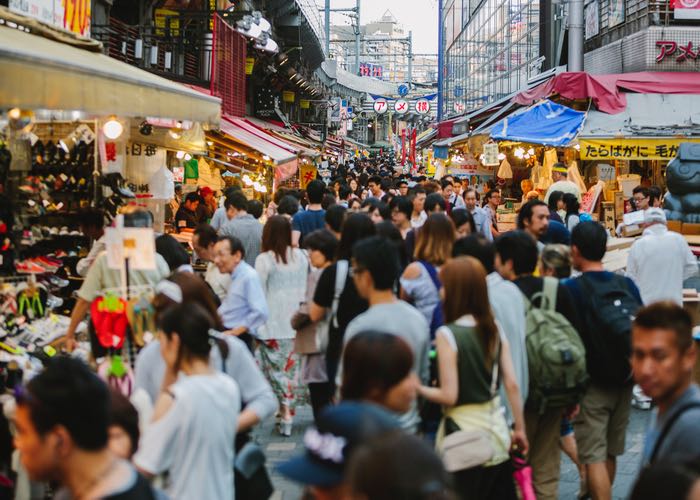
This street market, with a jumble of stalls selling everything from vegetables to inexpensive clothing, retains something of a shitamachi (old downtown) atmosphere. Stretching underneath and around the elevated train tracks from Ueno to Okachimachi stations, it’s packed with hundreds of stalls selling fresh seafood, dried seaweed, spices, candy, clothing, shoes, handbags, cosmetics, luggage, jewelry, watches and much more, mostly at discounted prices. It attracts commuters on their way home from work, housewives shopping for that evening’s dinner, and scores of young Japanese searching for fun fashion, including American-style clothing. Indeed, the Ame in its name can mean “candy” in reference to the many candy stores once found here, but it’s also a nickname for “American,” referring, perhaps, to Ameyoko’s roots as a black market after World War II for US army goods. Regardless, it’s still a hot market for Ame fashion, including baseball caps, jeans, cowboy boots and other US apparel.
Nearest stations: Ueno and Okachimachi. -
Amuse Museum
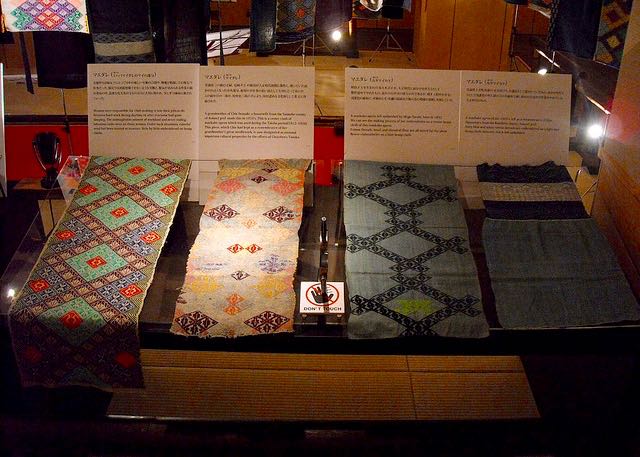
This gem of a museum specializes in something you won’t find anywhere else—patchwork clothing and quilts from Japan’s snowy north. Displayed like fine pieces of textile art, the heavy pieces of cloth (called boro in Japanese) were vital to survival in cold Tohoku, patched and mended and handed down from generation to generation. Some boro served as overcoats, some as birthing blankets and others were so large that the entire family could sleep nude together underneath and stay warm. Japanese director Akira Kurosawa was so impressed with the museum’s rare collection, he used some of it in his movie Dreams. Other items on display include antiques and household items, from cast-iron teapots to clocks. Don’t miss the museum’s Ukiyo-e Theatre, which shows digital renditions of famous woodblock prints and analyzes them for what they can tell us about the daily lives and customs of people during the Edo Period (1603-1868). Be sure, too, to take in the rooftop viewing deck with great vistas over Sensoji Temple, as well as the museum shop with arts and crafts from around Japan.
Nearest Station: Asakusa.
photo credit -
Asakura Museum of Sculpture
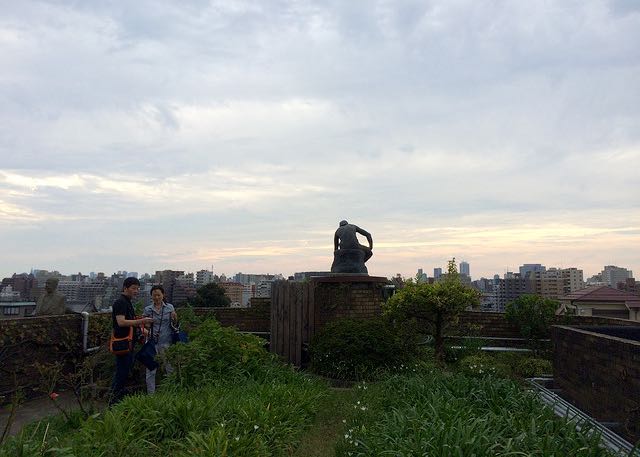
Off the beaten path in Yanaka, a delightful residential neighborhood filled with temples, this combination residence/studio reflects the talents and style of the artist who designed it. Fumio Asakura lived here from 1935 to 1964, creating statues in his airy studio, running his sculpture school, entertaining overseas guests in a Western-style drawing room, and living in Japanese-style tatami rooms with a teahouse atmosphere. Utilizing a natural spring, he wrapped his home around an inner pond, filled with trees, shrubs and massive stones that represent the Confucian precepts of benevolence, justice, propriety, wisdom and fidelity. Because the water garden lies in the center of the home, most rooms have views of it, including one upstairs that was designed so that the morning sun shone on crushed agate walls, turning them red. Another unusual feature is the rooftop garden, where Asakura’s students tended vegetables as an exercise to sharpen their senses. Asakura’s sculptures are found throughout the house, including those of statesmen, female nudes, and cats (Asakura loved cats and is said to have owned as many as 10 at one time). His masterpiece is considered the “Grave-Keeper,” modeled after a man who worked at a nearby temple.
Nearest station: Nippori.
photo credit -
East Garden

The shogun’s mighty Edo Castle is long gone, but remnants of his mighty citadel and an attractive Japanese garden make this a great (and free) urban oasis. It’s located in the city center, on the spot where Edo (present-day Tokyo) was born – in the early 1600s, shogun Tokugawa Ieyasu built the mightiest castle in the land, surrounding it with moats and securing it with 29 watchtowers and 38 gates. It was a virtual castle within a castle, with secondary fortresses, administrative buildings, garrisons for warriors, gardens, horse stables and more. The highest hill is where Tokugawa’s Honmaru (inner citadel) once stood, but all that remain now are stone ramparts, Fujimi Turret and the stone foundation of the five-story castle keep, which was painted black with a gold roof and must have made an impressive sight towering above medieval Edo. The East Garden is also known for its spring blossoms, including wisteria, azaleas and irises. The most beautiful section is probably Ninomaru, a traditional Japanese garden surrounding a pond, but there is also a bamboo grove and wide, grassy lawns. Because this place is huge (52 acres), it rarely feels crowded.
Nearest stations: Otemachi, Takebashi, and Nijubashi-mae.
photo credit -
Edo-Tokyo Museum
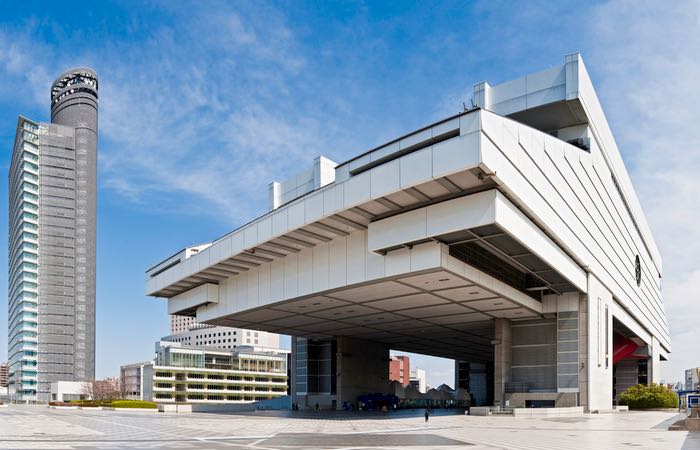
This excellent museum captures Tokyo’s dramatic 400-some years of history, including its centuries as a samurai town, the natural and manmade calamities that have repeatedly laid it to waste, and its continual rebirth. Using dioramas, maps, and models, the museum presents the early years of old Edo (present-day Tokyo) and what life was like for the samurai, merchants, townspeople and others who lived here. Displays begin with the founding of Edo in 1590, when the shogun chose this marshy area for his shogunate government, and continues through the Meiji Era (1868-1911), when Japan opened to the rest of the world after two centuries of isolation and Tokyo began adopting a more Western look. The museum describes the city’s utter destruction due to the Great Kanto Earthquake of 1923 and Allied bombing in World War II, followed by the 1964 Olympics that presented a modern city to the world. Exhibitions of the decades since include a full-size apartment from a public housing project and even a cosplay maid outfit. Although there is plenty to see, much of the signage is only in Japanese. Non-native speakers can remedy this by using audio guides or taking advantage of volunteer guides willing to give free tours (last tour at 3pm).
Nearest station: Ryogoku. -
Edo-Tokyo Open-Air Architectural Museum
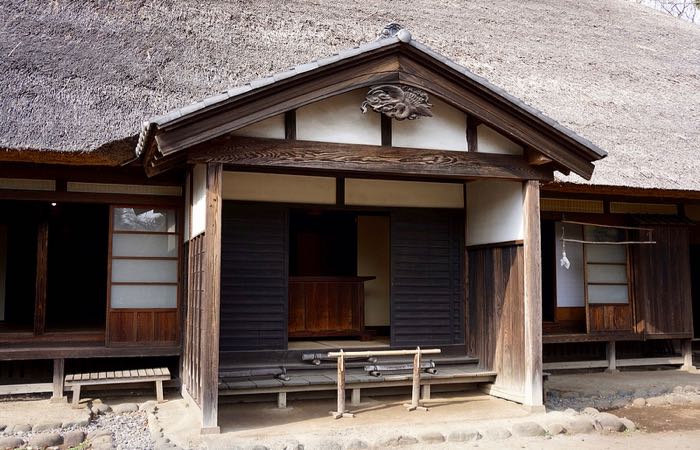
“Tokyo as it used to look” is the focus of this excellent museum of relocated historic former homes and shops. Laid out in a village-like setting in a park on the far western outskirts of the city, the museum displays 30 structures from the Edo Period to the late 1940s. These buildings provide an interesting perspective on both traditional Japanese architecture and on early Western architecture after Japan opened its doors to the world, spanning everything 200-some-year-old thatched farmhouses to Western-style homes of the 1920s and beyond. There’s a photography studio, a flower shop, a soy-sauce store, a Japanese inn, a police box, a public bathhouse, and much more, all filled with period furniture and other objects as though the inhabitants had just left. Outdoor structures have also found a home here, including stupas, a fire watchtower, and a cannon that used to be fired daily at noon. You can easily spend a couple of hours here, but as it’s a bit tricky to get to, be sure to leave ample time for the 30-minute express Chuo rapid line from Shinjuku Station, followed by a 5-minute bus ride and short walk through the park.
Nearest station: Musashi-Koganei.
photo credit -
Fukagawa Edo Museum
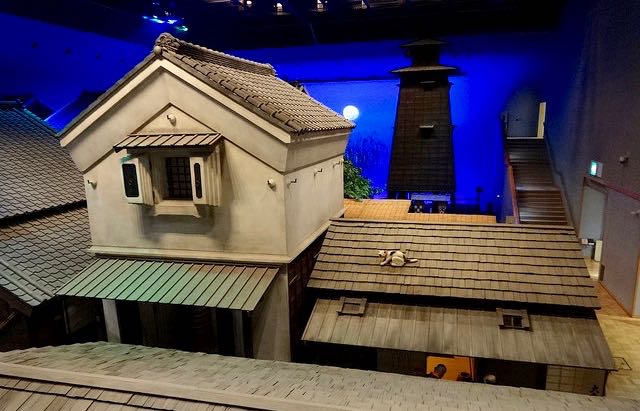
This reproduction of a Fukagawa neighborhood as it might have looked in the late 1800s is a great history lesson for families. Resembling a film set, it features 11 full-size replica buildings, filled with items used in everyday life and open for exploration, but it’s the small details and audio-visual effects that bring the whole setting to life. There are tenements showing how commoners lived, merchant stores selling such staples as rice and fish oil, a fire watchtower, a canal with a boathouse and boat, and even an outhouse. Families can make a game out of the experience by having kids hunt for small details, like a snail crawling up a fence, a cat on a roof or a dog relieving itself on a pole. Yet even those details are changed out with the seasons, so that bare trees in winter are replaced by spring’s blossoming cherry trees, followed, perhaps, by lightning and thunder claps in summer. You’ll want to spend at least 45 minutes here (though you can easily stay longer), because that’s the time it takes for the neighborhood to go through a full day’s cycle, from the gradual break of dawn to the darkening at sunset, accompanied by sounds like roosters crowing, birds chirping and street vendors hawking their wares. English-speaking volunteers are on hand to answer questions, making this a great learning about life in old Edo.
Nearest station: Kiyosumi-Shirakawa.
photo credit -
Ghibli Museum
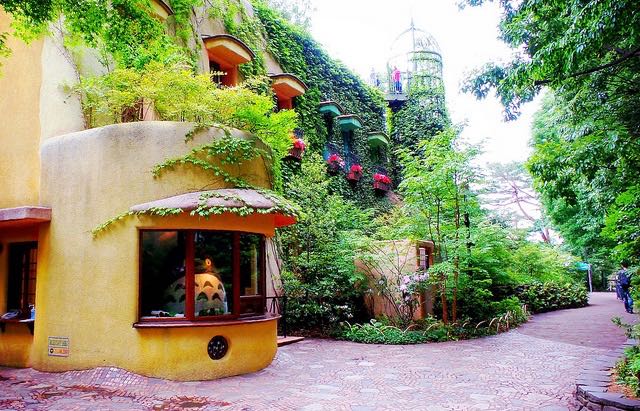
If you’ve seen Spirited Away, My Neighbor Totoro, or Howl’s Moving Castle, this architectural wonder that mirrors the creative mind of Japanese director Hayao Miyazaki will be high on your list. Hidden nooks and crannies, spiral staircases, catwalks, a rooftop garden and other unexpected surprises invite unstructured exploration, while explanations on the production of anime, displays relating to Miyazaki’s films, and a theater showing projection shorts from Studio Ghibli help visitors gain a better understanding of anime. Although there are a few activities geared toward kids (like the fluffy Cat Bus from My Neighbor Totoro that youngsters can’t resist climbing on), this museum is mostly geared toward teenagers and adults who are huge Miyazaki fans. For that reason, only those with an interest in anime might want to invest the time and effort it takes to visit the museum, located outside Tokyo and requiring advance ticket purchase, specifying an exact date and time of admission (no tickets are sold at the museum itself).
Nearest station: Mitaka, a 20-minute ride on the JR Chuo Line from Shinjuku Station, followed by a 5-minute bus ride. -
Hama Rikyu Garden
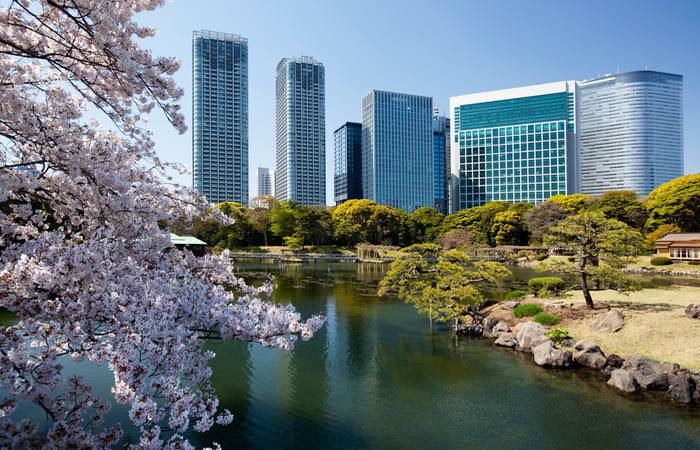
This traditional Japanese garden is a perennial favorite due to its easy access not far from Ginza and its mooring dock for sightseeing boats that cruise up the Sumida River to Asakusa. It dates from the Edo Period, when the shogun built a residence here and used its marshy grounds for duck hunting and falconry. After the fall of the shogun, it was acquired by the imperial family, who used it to entertain famous guests, including General Ulysses S. Grant. Opened to the public in 1946, the park is renowned for its inner tidal pool spanned by three bridges, the only seawater pond remaining in Tokyo and regulated by a sluice gate that rises and falls with the tide. There’s also a bird refuge (and a duck memorial to console the spirits of those ducks killed long ago), a peony garden, a 300-year-old pine, and a teahouse where visitors can relax over green tea served with sweets. Unfortunately, mushrooming skyscrapers of Shiodome now detract from the garden’s once idyllic location on the bay; for the best photos, head to the garden’s south end (the opposite end from the entrance).
Nearest station: Shiodome. -
Hanayashiki
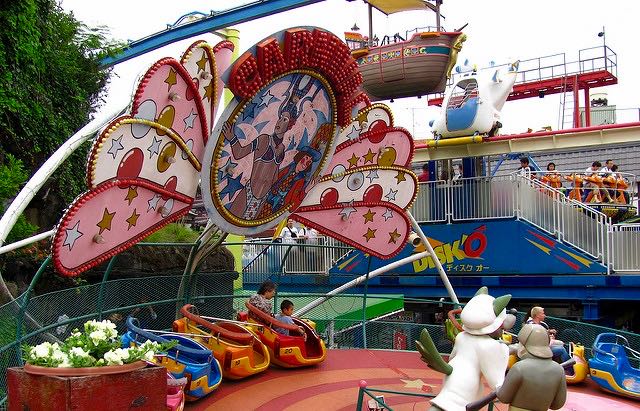
This old-fashioned amusement park, the country’s oldest, is just a stone’s throw from famous Sensoji Temple in Asakusa. Established in 1853 as a flower park, it appeals mostly to kids 13 and younger with its carousel, kiddie Ferris wheel and other rides in the shapes of taxis, helicopters, swans and ships, and even a mechanical panda. It also offers one of the country’s oldest steel roller coasters that looks tame but delivers a few thrills, a 3-D theater, labyrinth and a haunted house. It’s a fun way to spend a couple of hours, and with its carnival-like atmosphere, is the perfect antidote to the sterility (and sky-high cost) of today’s theme parks. Note, however, that after paying admission, you must still purchase tickets to enjoy each attraction, or you can buy a pass for everything. On the other hand, after paying admission, parents can also simply watch as their older children go round the merry-go-round – an adult can accompany kids 4 and under without having to buy a ticket.
Nearest station: Asakusa.
photo credit -
Hara Museum of Contemporary Art
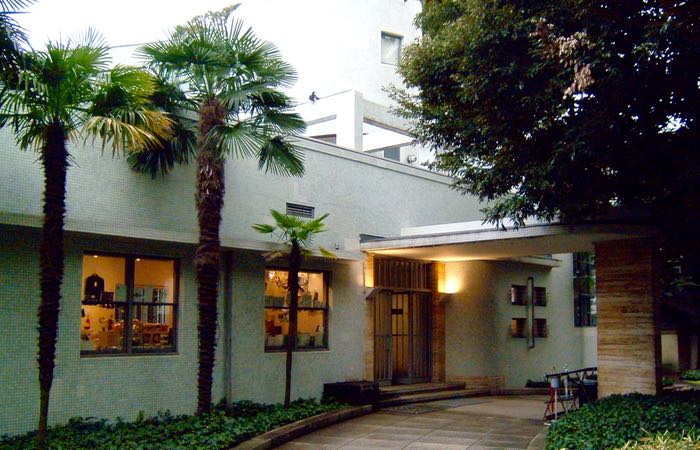
Japan’s oldest museum of contemporary Japanese and international art. Open since 1979, Hara Museum stages three or four exhibitions a year, mostly international works in art, architecture, photography and design. At least once a year it also showcases pieces from its own 1,000-work collection of paintings, sculptures, drawings and videos, concentrating on the 1950s and ‘60s and including works by Christo, Andy Warhol, Claes Oldenburg, Jackson Pollock, Frank Stella, Kusama Yayoi, Tadanori Yokoo, and many more. But the art isn’t the only reason for coming here. The museum itself is a rare 1938 Bauhaus-style Art Deco home, designed by Jin Watanabe (who also designed the main gallery of the Tokyo National Museum). And rather than close off the home’s former bathrooms, closets and cubby-hole spaces, this museum has filled them with permanent, playful installations that catch museum-goers off guard and then engage them, making for a more personal experience (like the downstairs toilet re-imagined by Yasumasa Morimura). The museum’s glass-enclosed café, with outdoor seating, is a good place to relax after seeing exhibition.
Nearest station: Shinagawa, then a 15-minute walk; or, take bus 96 from Shinagawa to the first stop, Gotenyama.
photo credit -
Imperial Palace
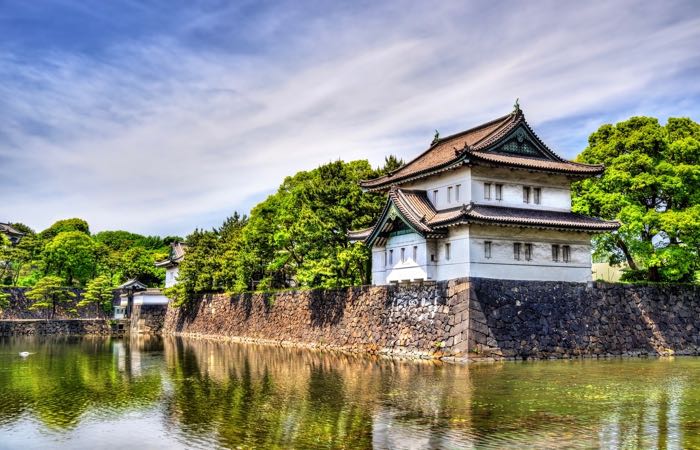
The Imperial Palace serves as the home of Japan’s royal family. Located in the city center, it occupies what was once the site of the shogun’s castle and is still surrounded by a medieval moat. The palace (where official functions take place) and the imperial residence are not open to the public, but palace grounds are open to well wishers twice a year, on January 2 and the emperor’s birthday, when the imperial family makes an appearance and greets the throngs. In addition, palace grounds are also open for free guided tours, given Tuesday to Saturday at 10am and usually 1:30pm. Lasting 75 minutes and covering 1.3 miles, tours are conducted only in Japanese (English-language audio guides are provided) and take participants past official buildings, an inner moat, relics of the shogun’s castle such as Fujimi Turret, and Nijubashi Bridge. You can sign up on the day of the tour or in advance by phone, in person, by mail or online (recommended during busy tourist seasons). Otherwise, the most popular place to take a photograph is in front of double-arched Nijubashi Bridge, with Fujimi Turret in the background (many tour buses make a stop here). The adjoining East Garden, once site of the shogun’s inner citadel, is also worth seeing.
Nearest stations: Nijubashi-mae and Otemachi. -
Japan Open-Air Folk House Museum
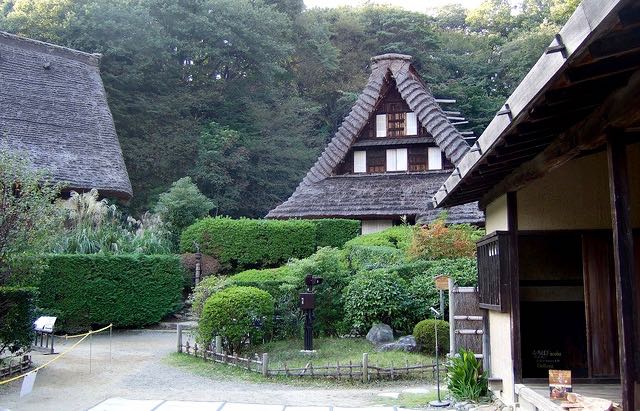
This architectural museum recreates a rural village from Japan’s past, with about 25 relocated houses and other structures brought from other parts of the country. Spread along wooded hillsides, the Edo-era buildings include 300-year-old thatched farmhouses, merchants’ homes, a fisherman’s house, a water mill, a shrine, kabuki stage, storage sheds, and an imposing gate that once guarded a samurai’s mansion. All the buildings are filled with period furniture, tools and other items, giving insight into what life was like for the mostly isolated rural villagers. An English-language pamphlet and signage tell the history of the various homes, while an Exhibition Hall delves into the design and techniques used to construct thatched-roof mountain homes, traditional machiya townhomes in Kyoto and other traditional structures. On most Sundays April to November, artisans demonstrate how they make their crafts. One of the thatched homes serves as a soba restaurant, and if you wish, you can try your hand at indigo-dying at the Indigo Dyeing Workshop, which takes a minimum of one hour.
Nearest station: Mukogaoka-Yuen Station, 30 minutes via express Odakyu Line from Shinjuku. -
Kabukiza Theatre
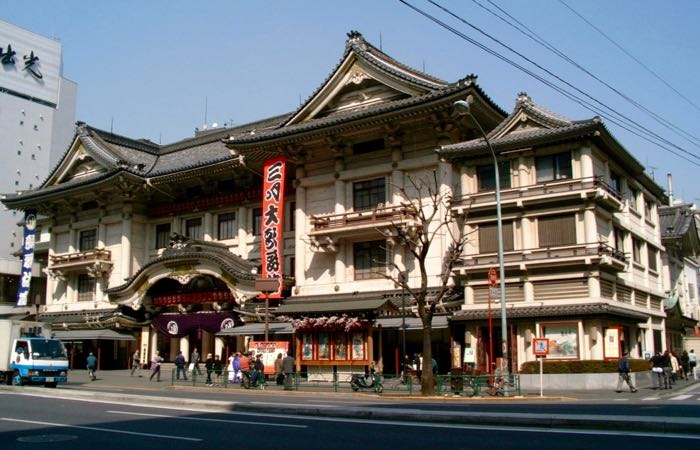
Gorgeous costumes, stunning stage sets and plays based on universal themes like love, revenge and obligation make kabuki Japan’s most popular traditional performing art. The Kabukiza is Japan’s most famous kabuki theater, with a castle-like exterior built in the Momoyama style and a stage that features all the fittings required of a kabuki performance, including a revolving stage, platforms that can be raised and lowered for dramatic entries and exits of actors, and a runway extending into the audience. Kabuki plays were written mostly during the Edo Period, but one of the most interesting aspects is that all performers are men, with specialists performing the roles of women. There are eight or nine productions annually, with each production consisting of several acts that run throughout the day. Many visitors, therefore, opt for just a single act, with single-act tickets sold on a first-come first-serve basis for acts lasting about 60 to 90 minutes. To gain a better appreciation of kabuki, be sure to visit the Kabukiza Gallery on the fifth floor of the same building, with displays relating to kabuki, its stage setting, costumes and more.
Nearest station: Higashi Ginza.
photo credit -
Kappabashi Dougugai Dori
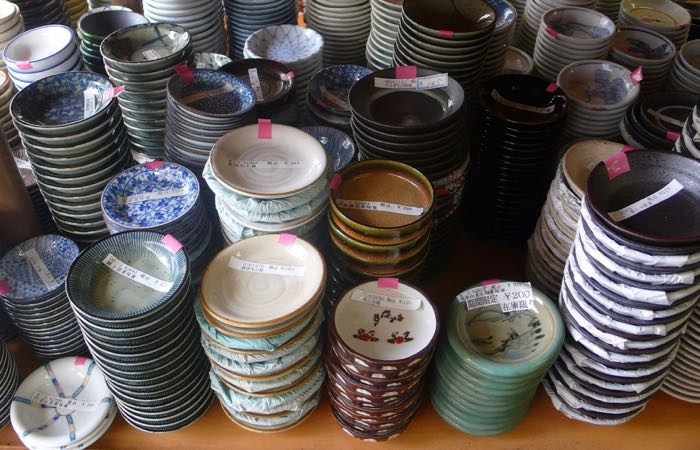
Kappabashi is Japan’s largest wholesale district for everything a restaurant needs to operate its business. Located between Asakusa and Ueno and with a history stretching back more than a century, the Kappabashi shopping street runs about six blocks and includes some 170 stores selling the necessary goods used in both Asian and Western cooking. Although shops sell mainly to restaurateurs and chefs, many will sell also to individuals, making this a great place to browse even for novices or for shoppers looking for gifts. You’ll see giant woks, industrial-grade refrigerators, pots and pans, bamboo mats, noren (short curtains hung outside restaurants and pubs to signal they’re open), rice cookers, knives, glasses, lacquered trays, bundles of disposable chopsticks, lunchboxes, individual soy-sauce containers, aprons, lanterns, chinaware, tables and chairs, and much, much more. One of the most sought-after souvenirs for international visitors are the models of plastic food used by restaurant display cases to advertise their dishes. Mugs of beer, sushi, spaghetti and other mouthwatering models are available, though prices aren’t cheap. More affordable are the sushi key chains and refrigerator magnets.
Nearest station: Tawaramachi.
photo credit -
Kasai Rinkai Park
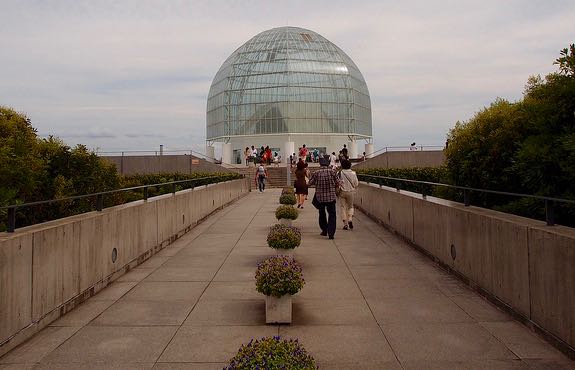
Tokyo’s largest park sprawls along Tokyo Bay and offers the city’s best aquarium, hiking trails and more, making it a great destination for families. Open since 1989, it also has bird sanctuaries with bird-watching facilities and posters identifying the winged creatures you might see. Other diversions include one of Japan’ largest Ferris wheels (with views of nearby Disneyland), a sandy beach popular for digging clams (no swimming allowed) and a viewing deck with panoramas of the bay. But the star of the show is Tokyo Sea Life Park, the capital’s largest and most reasonably priced aquarium, where you can see creatures from Tokyo Bay, the Pacific, South China Sea, Great Barrier Reef and other parts of the world. There are hammerhead sharks, bluefish tuna, penguins and more, along with a touch pool with small sharks and rays and a tide pool. There’s a limited food court here, but otherwise dining facilities are scarce, so pack a lunch or take advantage of the park’s barbecue grills, a rare commodity in Tokyo’s city parks.
Nearest Station: Kasai Rinkai Koen (a 12-minute ride from Tokyo Station on the Keiyo Line).
photo credit -
Mega Web
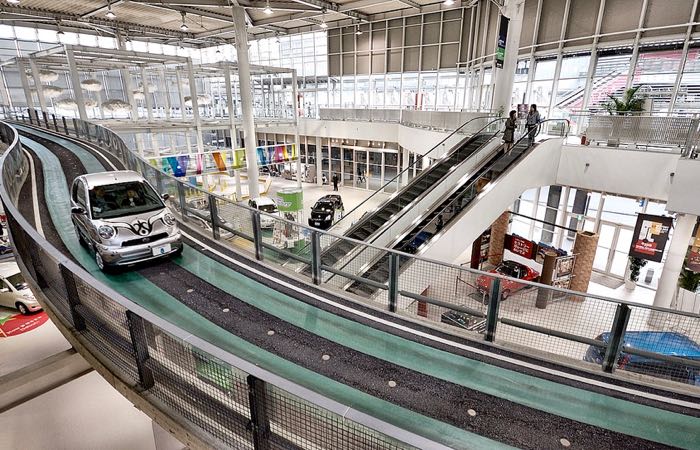
This Toyota showcase is both theme park and entertainment center, with displays of the carmaker’s latest models, simulation rides and an exhibit of classic vintage vehicles. Located in Odaiba, it’s hugely popular with families and couples on dates and is a fun (and free) way to spend an hour or two. The showroom, called Toyota City Showcase, stages some 60 models on the floor, including hybrids, racing cars, prototypes using next-generation technology, overseas models not sold in Japan, and “universal design” vehicles that accommodate the handicapped or elderly with seats that swing out for easier access or even double as wheelchairs. Most cars are open, letting visitors climb in for closer inspection. There are also racing simulators, a motion theater offering a thrilling virtual ride, a Driver’s Workout machine to test your reflexes, and simulators that let you experience Toyota’s safety features and devices. You can also try out a Winglet, similar to a Segway. The facility’s History Garage provides a look at vintage models from around the world, including classics from the 1950s through 1970s, as well as the chance to see mechanics at work as they restore classic famous cars.
Nearest stations: Aomi and Tokyo Teleport.
photo credit -
Meiji Jingu Shrine
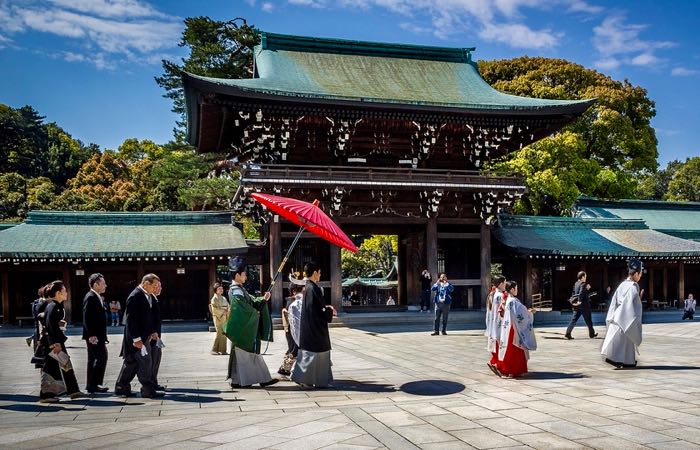
This is Tokyo’s most famous shrine, dedicated to Empress Shoken and Emperor Meiji, who oversaw Japan’s transition from an agrarian feudal economy to a modern industrialized nation. Because of its huge popularity, there are many Shinto weddings, events and festivities here throughout the year, and it’s the place to be for New Year’s, when the shrine welcomes several million visitors praying for a good year. Although it’s located in central Tokyo, not far from the somewhat frenetic neighborhood of Harajuku, its dense forest of more than 170,000 trees gives it a hushed serenity, which you have time to appreciate on the 10-minute walk from the first huge torii gate to the shrine itself, which is starkly plain with its cypress wood and copper roof (no photographs allowed). If time permits, it’s worthwhile taking in the compound’s other sights, including Meiji Jingu Gyoen, famous for its irises, azaleas and autumn leaves, and the Treasure Museum housing personal artifacts of Emperor Meiji and Empress Shoken.
Nearest stations: Harajuku and Meiji-Jingumae.
photo credit -
Miraikan – National Museum of Emerging Science and Innovation
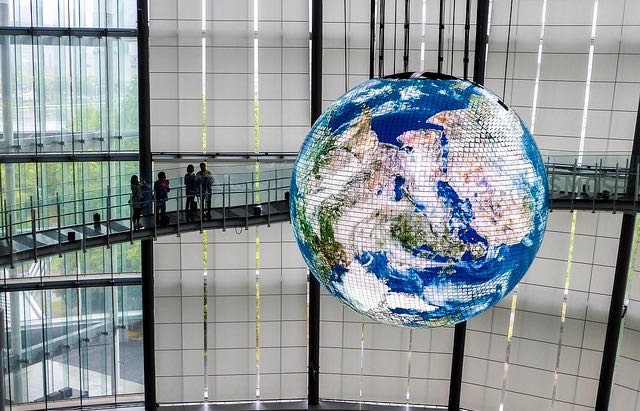
This high-tech, hands-on museum focuses on science and technology, and their implications for the future. Covering everything from our bodies to the universe, it describes how a particle accelerator works, how a brain functions, and how spatial information science could digitize data from our environment, and, someday in the far future, use it to predict events and avoid problems. There are exhibits on stem cell research, medical imaging devices that can provide less invasive treatments than today’s medicine and the earth’s hotspots for earthquakes. There’s a model showing how the Internet works, a replica of the living quarters of the International Space Station, and an interactive game that asks visitors to envision an ideal world 50 years in the future and what needs to be done now to accomplish that. But amid all this, it’s the robots that take center stage, including an android robot resembling a human child that can deliver news 24 hours a day and Asimo, a humanoid robot that can dance and perform. And what will the world be like when we can no longer tell androids (robots designed to look like humans) and humans apart? That, too, is something the museum asks us to ponder.
Nearest stations: Fune-no-Kagakukan and Telecom Center. -
Mori Art Museum

Tokyo’s top museum for cutting-edge, innovative art doubles as an observatory with great views over the city. Located on the 53rd floor of Mori Tower in the Roppongi Hills shopping and dining complex, it stages four exhibitions a year, with several shows ranging from visual arts to architecture and design staged simultaneously. Past exhibits have included contemporary art from Thailand, a Japanese 1970s experimental video art collective, the largest Warhol exhibit ever shown in Japan, and multi-faceted exhibits centered on a specific theme. With its state-of-the-art galleries featuring 20-foot ceilings and controlled natural lighting, free audio guides, great views of the city from the observatory’s floor-to-ceiling windows, bar and late hours (to 10pm most nights), this is a great way to start or end an evening in Roppongi. For an additional thrill, you can pay extra to visit Mori Tower’s open-air rooftop Sky Deck (last entry at 7:30pm).
Nearest stations: Roppongi and Azabu Juban.
photo credit -
Mount Takao
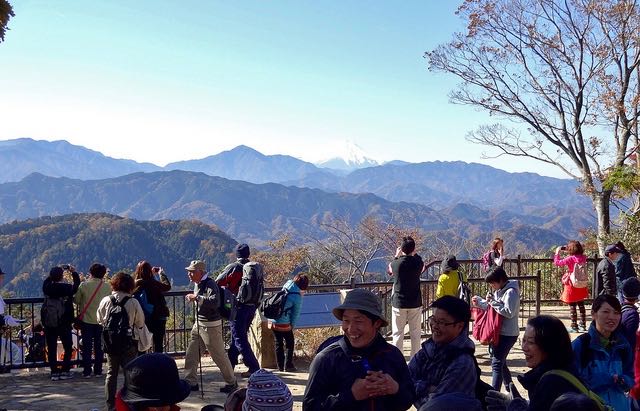
This hiking destination just an hour’s train ride west of central Tokyo is a great year-round escape from the city. A choice of cable car or chair lift delivers you about half-way up the 2,800-foot mountain, where you’ll find a seasonal beer garden (open mid-June to mid-Oct) and an observation deck, both with great views over the metropolis and distant mountain ranges. From here and the foot of the mountain, a system of eight interconnecting nature trails both easy and challenging present an almost endless range of possibilities, with popular destinations including Yakuoin Temple, a suspension bridge, and the summit for views of Mt. Fuji in clear weather. Because of Mount Takao’s popularity with Tokyoites, it’s best to come on a weekday to avoid weekend crowds, which can become especially huge when deciduous trees show off their autumn leaves.
Nearest station: Takaosanguchi, the last stop on the Keio Line’s semi-special express from Shinjuku Station. A bonus is the hot-spring bath, Takaosan Onsen Gokurakuyu, located right next to Takaosanguchi Station and a great finale to a day’s outing.
photo credit -
The National Art Center, Tokyo

This national museum is one of Japan’s largest, but instead of housing a permanent collection it specializes in changing exhibitions organized by other art institutions from around the world, mass media companies, its own curators and Japanese artist associations. The range, therefore, can be staggering, with past shows ranging from Renoir masterpieces culled from the collections of the Musée d’Orsay and Musée de L’Orangerie to the works of fashion icon Issey Miyake. But exhibitions aren’t the only draws here. Housed in a stunning, glass-façade building that’s home also to a Paul Bocuse brasserie, cafes and an interesting museum shop, all of which you can visit without paying admission, it’s a great destination in what is known as the Art Triangle Roppongi, which also includes the Mori Art Museum and the Suntory Museum of Art.
Nearest stations: Nogizaka and Roppongi.
photo credit -
National Diet Building
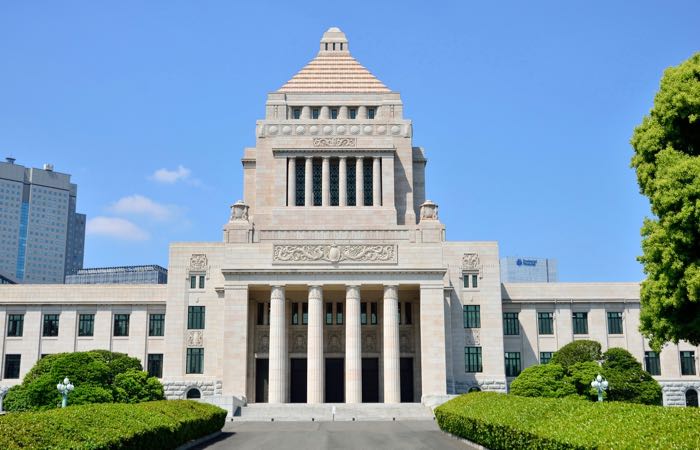
Japan’s legislative building is home to the House of Councillors and the House of Representatives and is shown on guided tours. It opened in 1936, after 17 years of construction and 50 years after the original plan by German architects was rejected for not reflecting enough Japanese design elements (ironically, it ended up looking a lot like that original German design). Stately and grand, it has a pyramid-like tower in its center that was Japan’s tallest when constructed and contains the Central Hall with a four-story cathedral-like ceiling and stained glass. To the north lies the House of Councillors, while the south wing contains the House of Representatives. Interestingly, prior to World War II it was known as the Imperial Diet, with the House of Representatives elected by the people but the House of Peers consisting of members of the imperial family, descendants of feudal lords and others appointed by the emperor. Now, of course, the present constitution adopted in 1947 states that both houses are elected directly by the people. Sixty-minute tours of the Councillors chamber, Central Hall, Emperor’s Room and other spaces are conducted in Japanese (English brochures are provided) on weekdays, excluding holidays and when there are plenary sessions. The House of Representatives offers 90-minute tours conducted in English twice a week, but these require reservations.
Nearest stations: Nagatacho and Kokkai-gijidomae. -
National Museum of Japanese History

Almost everything you want to know about Japan’s history can be found in this excellent and comprehensive museum. Its six galleries present a chronological overview of virtually all periods of the islands’ history, from ancient times to the 1970s. Exhibitions cover Kyoto’s Heian Court (794-1192) and the lives of aristocracy, the rise of the warrior samurai class and the shogunate government in Edo (now called Tokyo), the lives of commoners during the Edo Period (1603-1867), the opening of Japan and the influx of Western ideas and architecture, the Great Kanto Earthquake, wars waged in the 19th and 20th centuries, and 1950s pop culture. You’ll see a multi-layered kimono worn by Kyoto’s aristocrats in the 12th century, a model of a 16th-century feudal lord’s castle, a map of Edo Castle, the partial reconstruction of a Japanese inn, a recreated street scene of Asakusa from around 1915, and a model of a 1950s village. There’s so much to see, you could easily spend half a day here; the museum’s free audio guide alone takes three hours to listen to all 284 entries. Also well worth a visit is surrounding Sakura Castle Park with it’s Botanical Garden of Everyday Life, displaying plants once used for medicine, dyeing textiles, making paper, producing glue, and many other uses in Japan’s past. Unfortunately, this museum is far outside Tokyo in Sakura City, Chiba, 60 minutes from Tokyo Station via the JR Sobu Line or 55 minutes from Ueno Station via the Keisei line, followed by a bus or taxi ride.
Nearest stations: Keisei Sakura or JR Sakura Station.
photo credit -
National Museum of Nature and Science
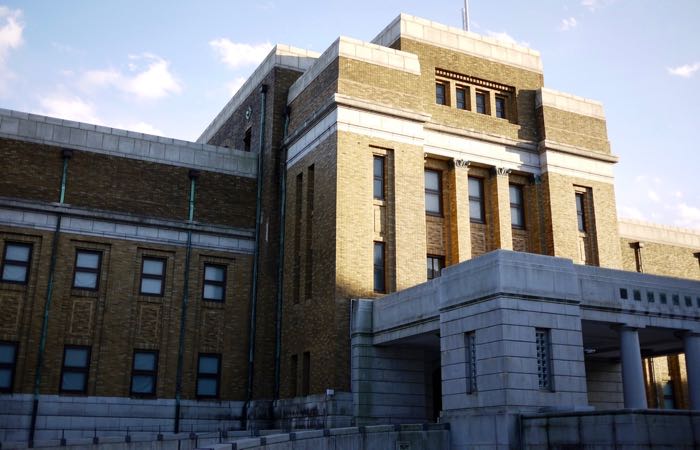
Ueno is known for its many museums, but none appeal to children as much as this one that covers everything from the evolution of life to Japanese inventions. With imaginative displays and hands-on exhibits, it’s divided into two sections, a Global Gallery that covers our world and universe and a Japan Gallery that concentrates on the natural history of Japan. There are skeletons and replicas of dinosaurs, an arena with a jaw-dropping display of some 100 taxidermic animals from around the world, fossils of extinct creatures, skeletons of mink and sperm whales, exhibits devoted to the development of Japanese technology, a Japanese mummy from the Edo Period, a stuffed Hachiko (a bronze statue of the famous Akita stands outside Shibuya Station) and life-size dioramas that present the long history of the Japanese people. There’s plenty to keep families occupied for at least two hours, including a 360-degree theater included in admission, but because English-language explanations are limited, some visitors might also find it useful to rent audio guides for an additional fee.
Nearest station: Ueno. -
National Museum of Modern Art
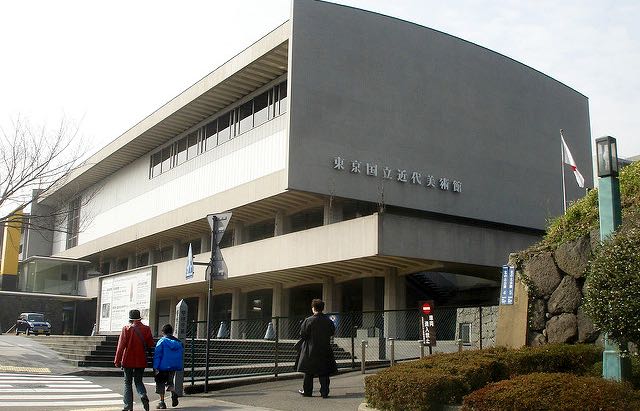
This is the nation’s largest collection of modern Japanese art. Some 12,000 items are in its inventory, including paintings in both Japanese (such as Nihonga) and Western styles, prints, watercolors, drawings and sculpture, dating from the beginning of the 20th century to the present. In addition to its permanent collection, which changes four times a year and features about 200 works drawn from its massive inventory, there are special exhibits that focus on a particular artist or theme. Occasionally, works by Western artists are also displayed for comparison. It’s no secret that European artists were heavily influenced by ukiyo-e woodblock prints; likewise, Japanese artists were influenced by impressionism, expressionism and other Western movements, evident in the many landscapes, portraits and other works you’ll see here. Names to look out for include Yokoyama Taikan (who was influential in creating the Nihonga style), Kuroda Seiki (considered the father of modern Western-style painting in Japan), Ryusei Kishida and Shiko Munakata. Nearby and included in your ticket price is the Crafts Gallery, housed in an attractive 1910 brick building and showing contemporary crafts in changing exhibits, from bamboo baskets and glassware to pottery.
Nearest station: Takebashi.
photo credit -
National Museum of Western Art
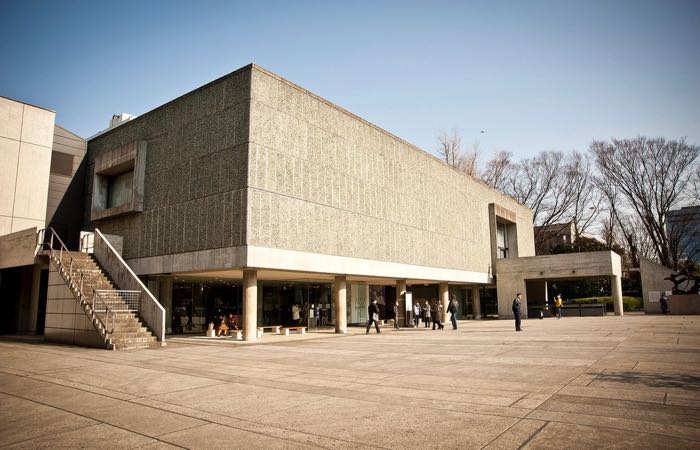
One of the world’s largest collections of Rodin sculptures, and works by virtually every famous European painter are the draws of Japan’s only national museum of Western art. Housed in a 1951 building by Le Corbusier that was declared a World Heritage Site in 2016, the museum’s permanent collection is a veritable who’s who of art from the Middle Ages through the 20th century, with at least one or more works representing such greats as Lucas Cranach the Elder, Rubens, El Greco, Tintoretto, Tiepolo, Delacroix, Renoir, Pissarro, Sisley, Courbet, Van Gogh, Gauguin, Picasso, Max Ernst, Dubuffet, Pollock and others. In keeping with widespread Japanese admiration for Claude Monet, this artist has a whole room devoted just to him. Rodin’s sculptures are found both inside and outside the museum, including his “Adam,” “The Kiss” and “The Gates of Hell.” In addition to the permanent galleries, there are also special exhibitions drawn from the museum’s 5,500 items of inventory or from prestigious art institutions from around the world.
Nearest station: Ueno.
photo credit -
Nezu Museum
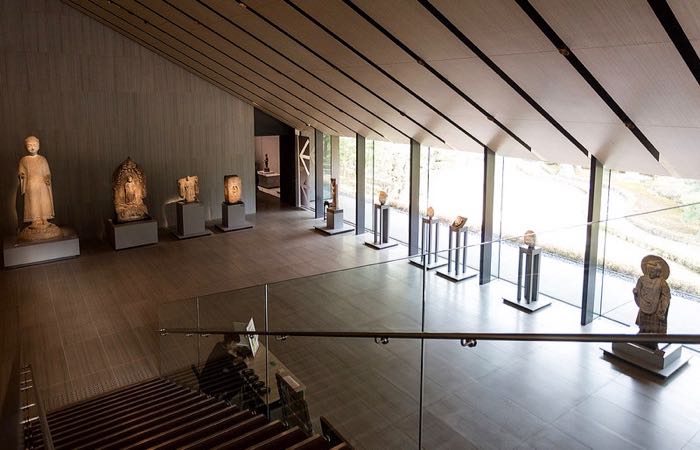
Pre-modern Japanese and East Asian art may be the focus of this private museum, but its “secret” garden in fashionable Aoyama is what makes it unique. The strikingly contemporary museum houses the private collection of a railroad magnate on the grounds of what was once his residential estate, with 7,000-some items that include paintings, calligraphy, ancient Chinese bronzes, sculpture, ceramics, lacquerware, textiles and objects relating to the tea ceremony. Seven works are designated National Treasures, including a hanging scroll called “Nachi Waterfall” from the 13th or 14th century and the museum’s most famous artwork, a pair of folding screens called “Irises” painted by Ogata Korin in the 18th century. Since exhibitions change on a rotating basis, check the website to see what’s being shown. Admission provides access also to the garden, which unlike traditional Japanese gardens is more rustic and overgrown, with a pond, teahouses, sculptures and bridges providing an unexpected oasis in the city center. The museum’s glass-enclosed NEZUCAFE is also an ideal spot for a break, offering limited light meals and great views of garden foliage throughout the seasons.
Nearest station: Omotesando.
photo credit -
Oedo Antique Market
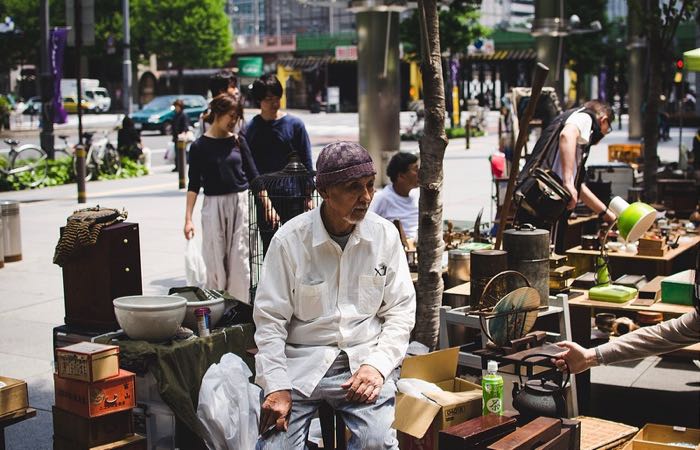
This is the largest antiques market in Tokyo. Held the first and third Sunday of every month in the outdoor courtyard of the International Forum building, it features some 250 vendors offering antiques and brick-a-brac. Although the inventory can change, it’s a good bet for Edo-era antiques like woodblock prints and lacquerware, retro 1950s goods, and a wide variety of used kimono, Japanese-style chests and other pieces of small furniture, glassware, ceramics, housewares and much, much more. Some vendors also specialize in Western antiques, with high prices to match for the Japanese market. Because you never know what you might find, this is a fun place to browse, especially for what the various objects tell us about Japan’s past and lifestyle. In any case, check the website, because dates sometimes change due to other events being held here.
Nearest stations: Yurakucho and Tokyo. -
The Omiya Bonsai Art Museum
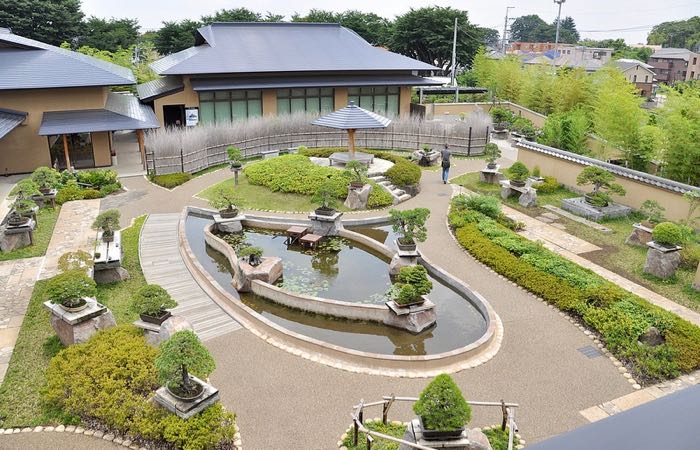
This is Japan’s only public museum devoted to bonsai, the ancient art of tree miniaturization. Originating in China and brought to Japan in the 9th century, bonsai is achieved by confining any tree or shrub to a small container and by careful pruning of its roots and branches. This museum teaches visitors how to appreciate bonsai from all angles, from its trunk and bark to its branches and leaves, and to see how pruning, wrapping wire to shape branches, repotting and other practices are fundamental to creating the miniature landscapes. If carefully tended, bonsai can live for decades and even centuries, passed down from one generation to the next. In addition to providing information on everything you might want to know about bonsai, there are displays of pots (which are carefully chosen for each bonsai), paintings of bonsai, and a collection of natural stones used in miniature landscaping. But the main stars of the museum are the bonsai themselves, with about 50 displayed like true works of art. Inside, bonsai are individually displayed in traditional tokonoma (alcoves), while outside they’re shown in a bonsai garden. An audio guide provides information on each bonsai, the oldest of which is a 1,000-year-old Yezo spruce called “Todoroki.” The museum is located in Saitama City, known for its handful of bonsai nurseries that relocated here after the 1923 Great Kanto Earthquake.
Nearest station: Toro, 30 minutes from Ueno on the JR Utsunomiya Line.
photo credit -
Ooedo-Onsen Monogatari
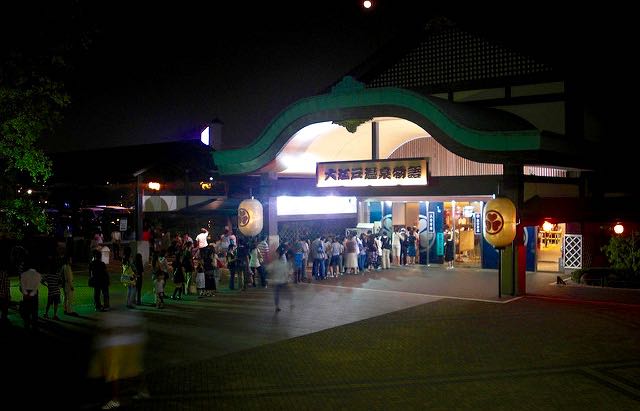
This hot-spring theme park combines Edo-era architecture with indoor and outdoor baths. Located in Odaiba amid malls and other diversions, it also offers steam baths, specialized baths (like the Bath of Silk that makes you skin feel wonderfully smooth) and an outdoor footbath. There’s also a spa offering massage, foot reflexology and “fish” therapy, in which little fish nibble the dead cells off you skin (extra fees charged). Bathing is in the buff in Japan (facilities are separated for men and women), but after paying admission you’re given a choice of yukata (cotton kimono) in different colors and patterns, which you wear to public areas like the food court offering typical Japanese street fare, game corner, shops, lounge areas with tatami or reclining chairs and outdoor footbath, making it possible to enjoy these places with a group or family. The onsen is open 22 hours a day, with evening discounts available. Note, however, that people with tattoos are not allowed, which is public policy at virtually everywhere bathhouse in Japan.
Nearest station: Telecom Center.
photo credit -
Oriental Bazaar
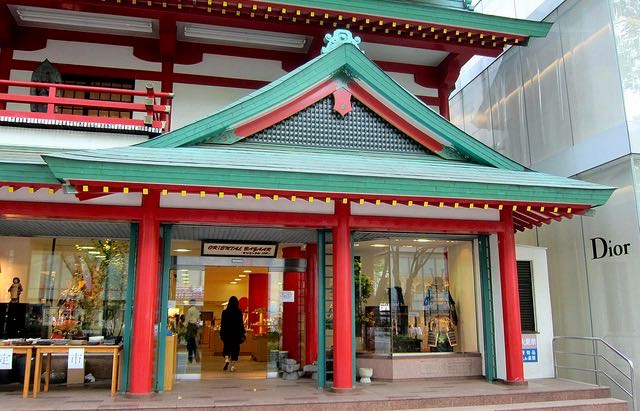
Tokyo’s largest and most well-known souvenir shop has been in business since 1951. Located on Omotesando Dori, its first customers were mostly military families from a nearby U.S. army barracks, though its three floors now attract visitors from all over the world in search of woodblock prints, fans, sake sets, jewelry boxes, chopsticks, cotton yukata (Japanese sleepwear), T-shirts, lamps, Imari and Kutani porcelain, paper products, hair accessories, scarfs, stationery, purses, traditional toys, key chains, both new and used kimono, and books on Japan. Up on the second floor find antiques, including antique furniture. Worth noting is that the store has larger sizes, accepts both Euros and American dollars (one of the few Tokyo stores to do so) and will ship your purchases abroad. It has an eye-catching orange and green façade, not unlike that of a Shinto shrine.
Nearest stations: Meiji-Jingumae, Omotesando and Harajuku.
photo credit -
Ota Memorial Museum of Art
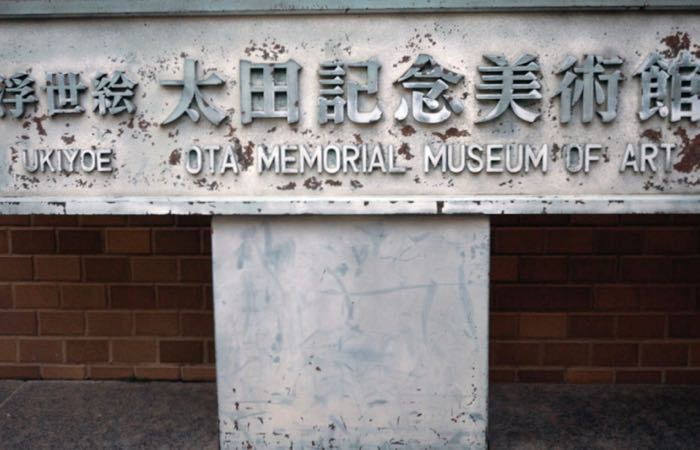
This privately owned museum is the best place in town for viewing Japanese woodblock prints. Its 14,000-some prints, most of them collected by the late Seizo Ota for more than 50 years, cover almost the entire genre throughout the Edo Period. With popular subjects ranging from courtesans and kabuki actors to romantic landscapes, the collection includes works by such well-known artists as Kitagawa Utamaro, Katsushika Hokusai and Utagawa Hiroshige. Because the museum, hidden on a back street in Harajuku, is small and the collection so vast, thematic exhibitions of fewer than 100 prints change monthly. One month, for example, might feature Utamaro’s prints of beautiful women, while the next might show Hiroshige’s landscapes along the Tokaido Road and Mt. Fuji, all with explanations in English. You could theoretically, therefore, come every month and still never see the museum’s entire collection.
Nearest stations: Harajuku and Meiji-Jingumae.
photo credit -
Panasonic Center Tokyo
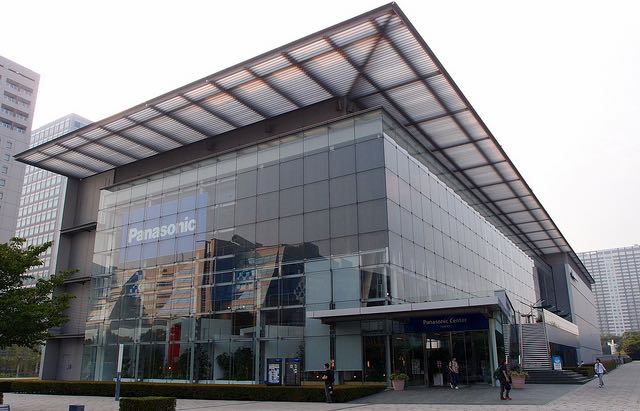
A free showroom for Panasonic products, this facility shows products available now and prototypes imagined for the future. It’s divided into various activities and themes, from a Nintendo entertainment center with both classic and new games to a special exhibit highlighting Panasonic’s role in past Olympics and as a sponsor for the 2020 games in Tokyo. A new products corner shows the latest in audio-visual equipment, home appliances and beauty products. For a small fee you can also visit RiSuPia, a hands-on science and mathematics museum with educational challenges and experiences. On weekends and holidays, there are guided tours of Wonder LifeBOX, a prototype of a future home and community of the 2020s and 2030s. It envisions being able to use your smart phone, for example, to gather information from stations or signs throughout the community, while a virtual “Partner” can alert you to the condition of your house and its appliances, relay the location of family members, give information on disasters in the community, provide help in the kitchen, monitor sleeping patterns and present a virtual image of how you’d look in a particular outfit without actually having to put it on.
Nearest stations: Ariake and Kokusai-tenjijo.
photo credit -
The Railway Museum
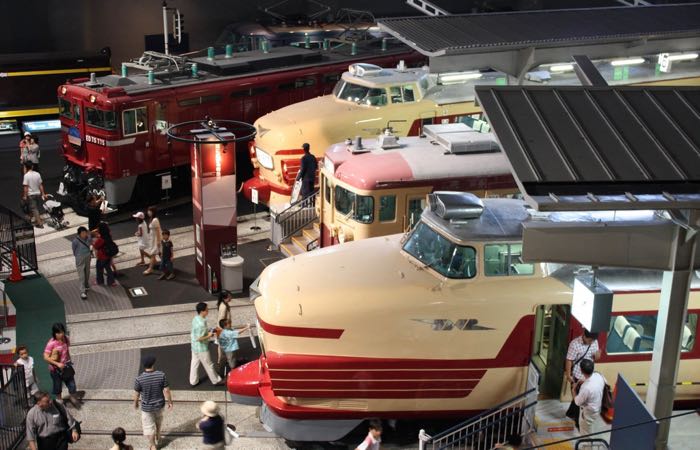
This is a natural for train buffs, but even those who aren’t can enjoy its large collection of vintage locomotives, carriages built just for the emperor, and various incarnations of Shinkansen bullet trains. Located in a hangar-like building resembling an old European train station, the museum provides a chronological history of the railway in Japan, starting with Japan’s first steam locomotive in 1872 and continuing with the birth of the Shinkansen just in time for the 1964 Tokyo Olympics. It also provides technical information about what it takes to keep a train running. Kids, too, find it fun, since many of the 36 trains are open for exploration. There’s an indoor playroom for toddlers, an outdoor playground with train-shaped equipment, and a miniature train that provides rides. Other highlights include a miniature train diorama with 4,600 feet of track, simulators that let you drive a train into Akihabara JR Station or a Shinkansen, and a rooftop deck to observe Shinkansen whizzing past on their way to Tohoku or Tokyo. And in case you can’t resist, a museum shop sells model trains you probably won’t find back home. It’s located in Saitama City.
Nearest Station: Omiya, 20 minutes from Ueno on the JR Utsunomiya Line, followed by a dedicated shuttle to the museum.
photo credit -
Rikugien Garden
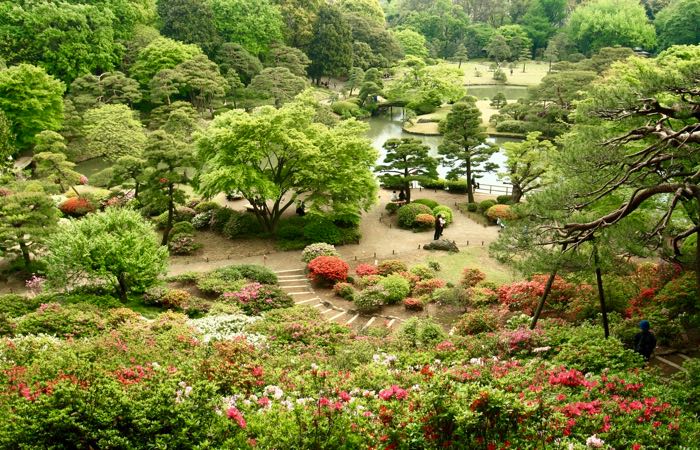
Of Tokyo’s many traditional Japanese gardens, this is probably its most spectacular. It’s located farther north than most tourists venture but is hugely popular among locals for its azaleas and cherry blossoms in spring and its autumnal leaves in fall. It’s stunning any time of the year, with a central pond, islets, hills, grassy lawns and strolling paths that bring a different view with practically every step. Completed in 1702 by a trusted confidante of the shogun and purchased more than 150 years later by the founder of Mitsubishi, the garden was donated to the city in 1938. It takes its name from a principle of Chinese poetry (a loose translation of its name is “Garden of the Six Principles of Poetry), which seems fitting for a garden almost beyond words. In any case, you don’t want to rush your way through here; plan on a good hour to soak up the Edo-era atmosphere and to enjoy green tea in the garden’s teahouse.
Nearest stations: Komagome and Sengoku. -
Sengakuji Temple
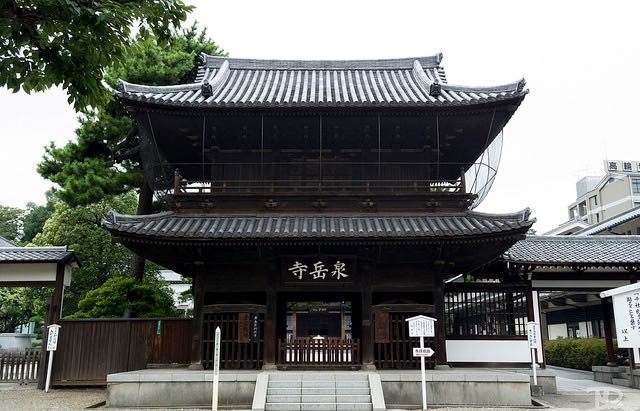
Memorialized at this temple are 47 masterless samurai who avenged their master’s death. The story, which every Japanese child knows and which is the subject of a popular kabuki play, starts in 1701: A feudal lord named Asano, in preparation for an imperial entourage from Kyoto, was directed by the shogun to seek advice in court etiquette from his official supervisor, Kira. A quarrel between Asano and Kira, however, caused Asano to draw his sword, which was strictly forbidden at Edo Castle. As punishment, Asano was condemned to commit ritual suicide through disembowlment (seppuku), his family was disinherited, his estate and castle were confiscated, and his samurai became masterless (ronin). They avenged their master’s death, however, by killing Kira at his mansion and parading his head through the streets of Edo to Asano’s grave in Sengakuji. For their act, the ronin, too, were ordered to commit seppuku. Through the centuries they have been held as heroes and are memorialized here with a museum containing their personal items and their tombstones on a hill. Every December 14, a festival here honors the 47 ronin.
Nearest station: Sengakuji.
photo credit -
Senso-ji Temple
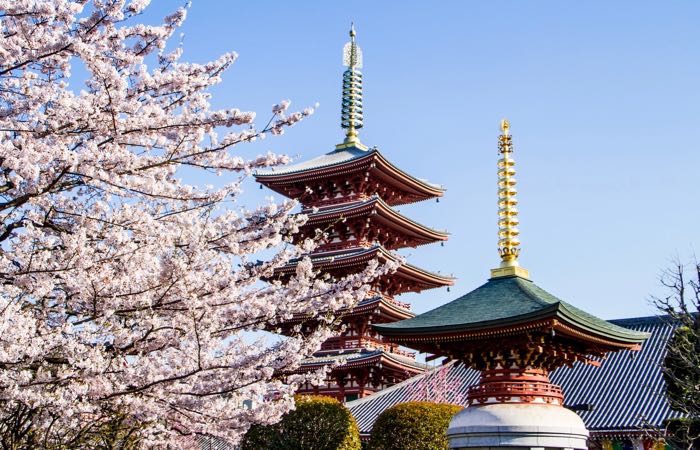
Tokyo’s oldest temple is also it’s most popular. Senso-ji predates Tokyo itself by almost 1,000 years, founded in the 7th century after two fishermen netted a two-inch golden statue of the Buddhist goddess of mercy and a temple was erected at this spot. Worshippers flock here to throw coins into the temple’s offering box, bow their heads and pray to the goddess. Among other things to see are Kaminarimon Gate with its 220-pound red lantern, Asakusa Shrine dedicated to the two fishermen and their headman, and Nitenmon Gate, which dates from 1618 and is the temple’s oldest structure. (It’s estimated Senso-ji has been destroyed and rebuilt about 20 times over the past 1,300 years, the last time after World War II.) In and around the temple are many counters dispensing fortunes in both English and Japanese, and there’s also a huge incense burner where visitors waft smoke over themselves for good health. A pedestrian pathway leading to the temple, Nakamise Dori, is lined with 100 stalls selling souvenirs both traditional and kitsch, including Edo-era sweets, paper umbrellas, fans, T-shirts, fake tattoos and hair pieces, yukata (Japanese sleepwear), barking toy dogs, magnets, key chains and much more. The surrounding area’s shops and restaurants, some in business since the Edo Period, make Asakusa one of the best old shitamachi (downtown) atmospheres in Tokyo.
Nearest station: Asakusa. -
Shinjuku Gyoen National Garden
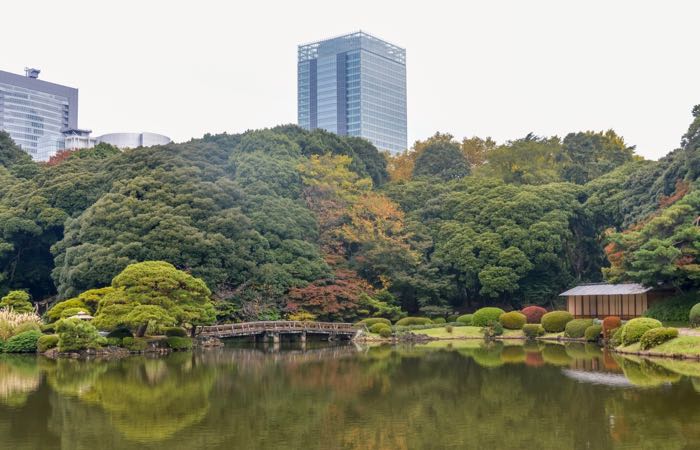
With 144 acres and three entrance gates, Shinjuku Gyoen is one of Tokyo’s largest parks. It occupies land that was once the esate of a feudal lord before becoming an experimental station for studying Western agriculture and then a private garden for the imperial family. It opened to the public after World War II, and is considered one of the city’s best examples of a Meiji Era (1868-1911) garden. Shinjuku Gyoen contains three distinct landscapes: a formal French garden, an English landscape garden, and one of Tokyo’s best traditional Japanese gardens. It also has wide, grassy lawns for picnics, a greenhouse with more than 2,400 tropical and subtropical plants, and planted areas that attract multitudes when cherry blossoms, azaleas, and other flowers bloom. In fall, the garden attracts crowds for its autumn foliage (especially on Maple Hill) and its large chrysanthemum exhibit. The Japanese garden, buried near the park’s center, contains a succession of ponds with islets and arching bridges, teahouses, and the Taiwan Pavilion, built for the wedding of the Showa Emperor.
Nearest stations: Shinjuku Gyoenmae, Shinjuku-Sanchome, Sendagaya and Kokuritsu-kyogijo. -
Shitamachi Museum
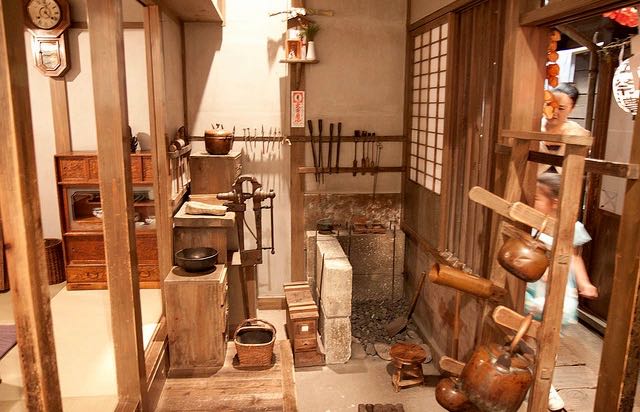
This museum portrays what life was like in shitamachi (old downtown neighborhoods like Asakusa and Ueno) more than 100 years ago. Filled with everyday items donated by area residents, it was founded with the hope of preserving for future generations what shitamachi were like before events like the 1923 Great Kanto Earthquake, World War II bombing, and the 1964 Olympics changed Tokyo forever. Although small, this grass-roots museum contains full-scale replicas of a candy store, merchant’s shop and tenement homes, as well as commonly used objects like work tools and cooking utensils, a 1910 public telephone, the façade of a neighborhood bathhouse and old photographs. Traditional toys and games are available for visitors to play, and volunteer guides are eager to provide insight into the shitamachi way of life and stand ready for free tours. The museum’s location just outside Ueno Park makes it easy to include when visiting the area’s many other attractions.
Nearest station: Ueno.
photo credit -
Sumida River Cruise
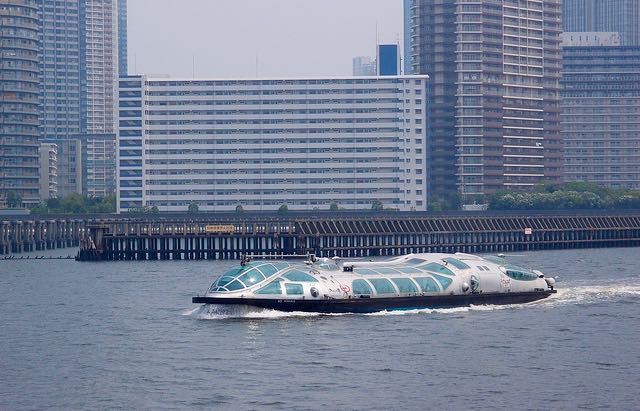
A boat trip on the Sumida River provides a relaxing, different perspective of Tokyo. During the Edo Period (1603-1868), the Sumida was the lifeblood for bringing rice and other agricultural products into the city. It was also the most popular way to travel to Asakusa, since this popular leisure destination was more than an hour’s walk outside city gates. Today, the Tokyo Cruise Ship Co. still ferries passengers to Asakusa, with views of passing barges, huge apartment complexes, double-decker superhighways, Tokyo Skytree and about a dozen bridges, each one different. Boats depart from Hama Rikyu Garden (admission to the garden required), Hinode Pier and Odaiba, with the trip to Asakusa from Hama Rikyu taking about 40 minutes.
Nearest stations: Shiodome or Shimbashi (Hama Rikyu), Hinode, Daiba and Asakusa.
photo credit -
Suntory Museum of Art
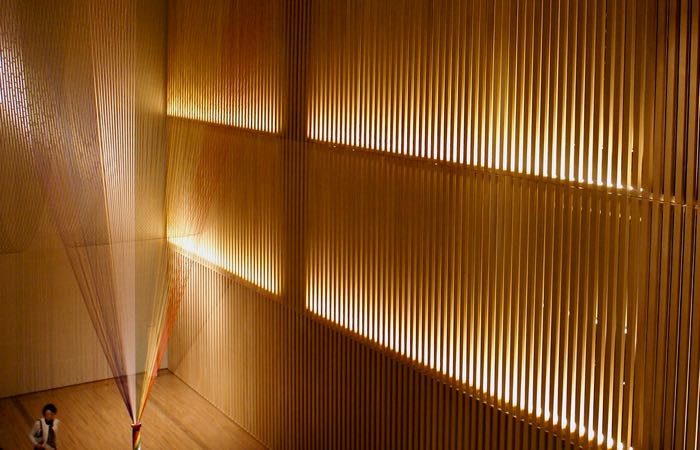
This wonderful Tokyo Midtown museum displays visiting collections along with temporary exhibitions culled from this private museum’s collection of Japanese antique arts and crafts. Utilizing traditional Japanese materials like wood and paper in its interior design and with suitably darkened rooms to emphasize the beauty of each individual work on display, the museum draws upon its collection of 3,000 items to advance the museum’s philosophy of “Art in Life.” Paintings, lacquerware, ceramics, glassware, Noh costumes, teaware, ornamental hairpins and other decorative objects inherent to Japanese life are exhibited as artistic objects here. Visiting exhibitions have ranged from the Bohemian glassware of Prague to works by Emile Galle´ from the Musée d’Orsay. The museum is small – only two floors – but nearby are the two other museums that make up the Art Triangle Roppongi: The National Art Center, Tokyo, and Mori Art Museum.
Nearest station: Roppongi.
photo credit -
TMG Observatory
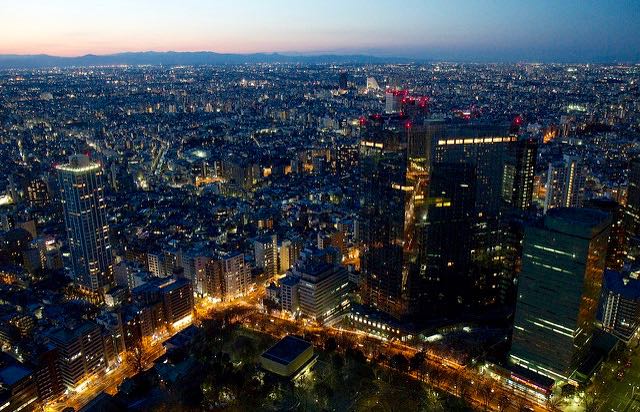
This is the best free observatory in Tokyo, located on the 45th floor of the Tokyo Metropolitan Government’s No. 1 building. There are actually two observatories; one in the north tower of the building and the other in the south. Both have souvenir shops, cafes and nearly identical views, with panoramic photos below each window to help visitors identify what they’re seeing. Because the towers are among the tallest buildings in west Shinjuku, there are unobstructed views in most directions, taking in Shinjuku Park, the expansive forests of Meiji Jingu Shrine and Yoyogi Park, skyscrapers near and far and, on clear winter days, even Mt. Fuji to the west. The towers have different open hours and closed days, but the north tower is the one generally open until 11pm (as with most attractions, last entrance is 30 minutes before closing), so its café becomes a bar at night with one of the city’s best views. On the first floor of TMG No. 1 is the Tokyo Tourist Information Center, with maps, pamphlets and information on the capital and its surroundings.
Nearest station: Tochomae.
photo credit -
Tokyo DisneySea
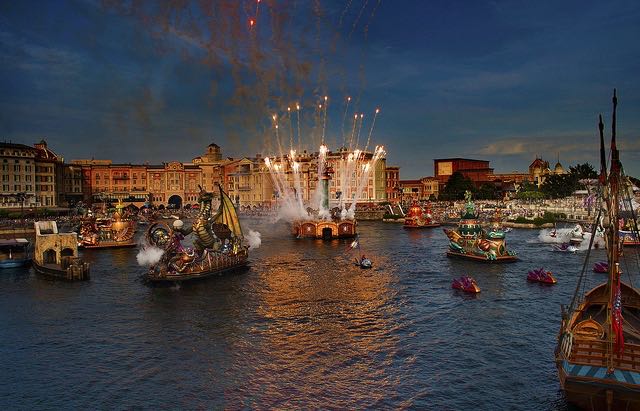
There’s only one DisneySea park in the world, making this class act a more singular choice than the Tokyo Disneyland beside it. Beautifully laid out and living up to Disney’s reputation as a magic kingdom, DisneySea is built on the theme of ocean myths and legends, and has seven “ports of call,” each with its own dramatic architecture, rides and attractions. You can stroll through Mysterious Island and travel underwater on 20,000 Leagues Under the Sea, visit the Arabian Coast for a boat ride through Sindbad’s Storybook Voyage, and explore the Lost River Delta before hurtling through danger on Indiana Jones’ Temple of the Crystal Skull. Although there are plenty of kiddie rides at the Mermaid Lagoon, strolling Disney characters like Mickey and Ariel, and shows designed for the entire family, DisneySea is geared mostly toward teenagers and adults and is a popular dating spot for young couples. With Disneyland and DisneySea located next to each other, a 15-minute train ride outside of Tokyo, Disney diehards often visit both with multi-day passes and stay in a hotel next to the parks.
Nearest station: Maihama (on the JR Keiyo or Musashino lines from Tokyo Station). There are also dedicated buses from Shinjuku and Tokyo stations and Narita airport.
photo credit -
Tokyo Joypolis
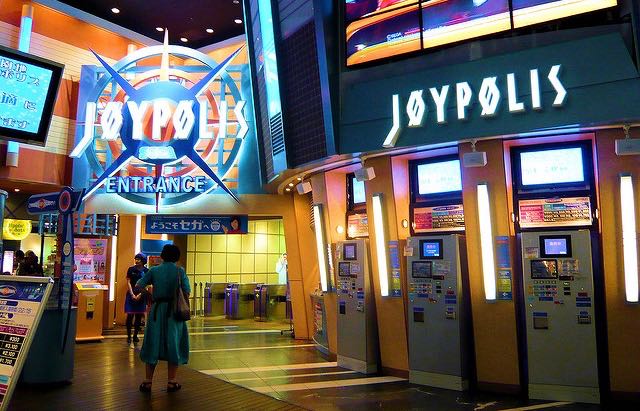
This indoor theme park revs it up with sophisticated simulators, horror houses and other fun-filled diversions. Located on the manmade island of Odaiba amid shopping malls, museums and other attractions, this is probably the most popular destination for thrill-seeking teenagers and adults. Brought to you courtesy of Sega, the Japanese video game developer, it offers three floors of attractions, including 4D motion simulators that make you feel as though you are actually flying through the air on a roller coaster or bobsled, running rapids on a raging river (expect to get wet!) or driving a car much too fast. There are also walk-through attractions featuring ghouls or zombies, 3D movies, a stage with both live and digital performers, and the usual arcade games. Various ticket options are offered, including a simple admission that then allows you to purchase individual tickets for specific attractions, as well as passports for those who want to do everything (evenings are cheaper). Note that there are height and age restrictions on some rides (The Room of the Living Doll, for example, is considered too creepy for children younger than seven).
Nearest station: Odaiba Kaihin Koen and Tokyo Teleport.
photo credit -
Tokyo National Museum
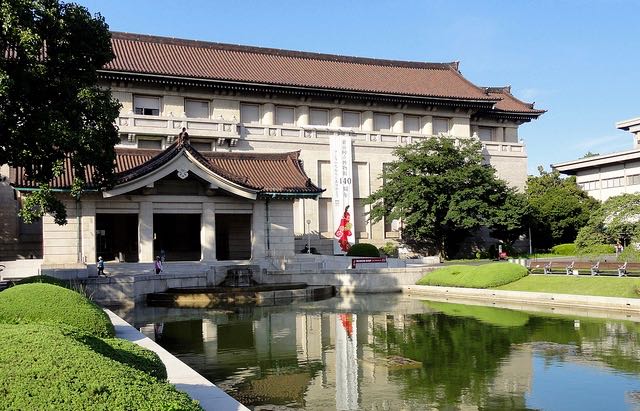
Japan’s top museum boasts the largest collection of Japanese art and antiquities in the world. It has a stunning collection of more than 110,000 objects, shown on a rotating basis with about 3,000 items on display at any one time. The museum complex is massive, divided into four specialized buildings that would qualify as stand-alone museums on their own, plus there’s another gallery with changing exhibitions. The Japanese Gallery (Honkan, or main building) is the one most visitors come to see, with 23 exhibition rooms showcasing ceramics, lacquerware, metalwork, kimono and other clothing, samurai armor, swords, folding screens, sliding doors, ukiuyo-e (woodblock prints), calligraphy, Buddhist statues and more. Don’t miss the museum shop, with good reproductions and crafts from contemporary artisans. Also highly recommended is the Gallery of Horyuji Treasures, devoted to priceless 7th- and 8th-century Buddhist treasures from the Horyuji Temple in Nara. If time permits, the Asian Gallery (Toyokan) houses art and artifacts mostly from China as well as from India, Korea, Southeast Asia and Egypt, while the Heiseikan Gallery is displays archaeological finds of ancient Japan.
Nearest station: Ueno.
photo credit -
Tokyo Photographic Art Museum
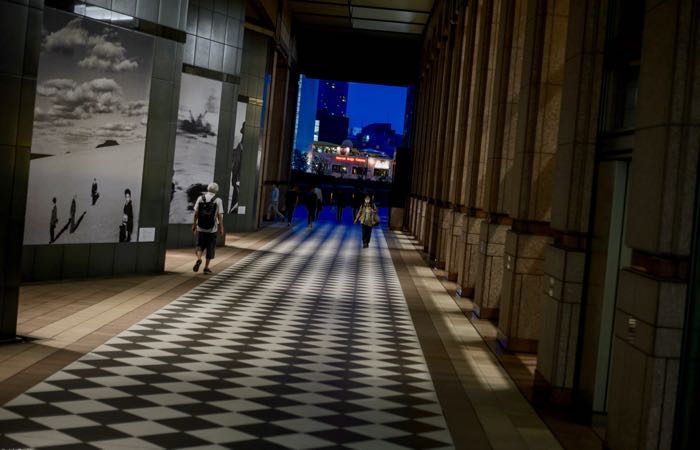
More than 30,000 photographs, mostly by Japanese artists but also by international photographers, are housed in Tokyo’s premier photography museum. Established by the Tokyo government as the Tokyo Metropolitan Museum of Photography in 1986 and reopened after renovations in September 2016 with a new name, its focus is on works that record everyday life in Tokyo, historic images, and images by both famous and up-and-coming photographers. There are often several different exhibitions being shown at any one time on its four floors of galleries, including retrospectives, winning entries from photo contests, themed shows, visiting exhibitions, multimedia displays, a Lab Theatre for films worthy of a museum of photography, and more. Tickets are for individual shows or combinations thereof. Other facilities include a museum shop and café, though there are also many shops and restaurants in surrounding Yebisu Garden Place.
Nearest station: Ebisu.
photo credit -
Tokyo SkyTree
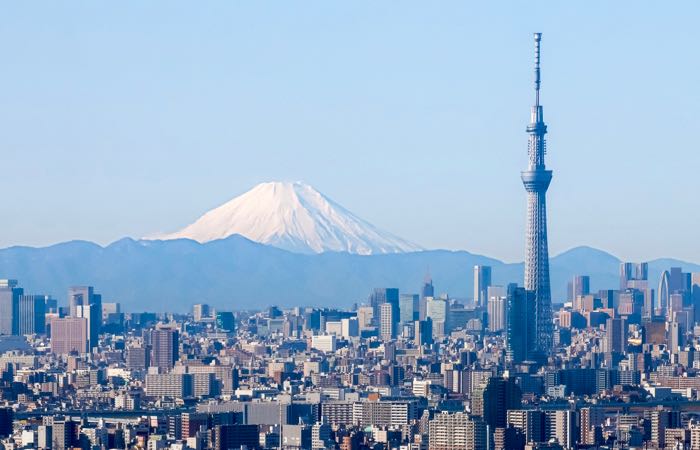
Tokyo’s priciest observatory is also its highest, certified by Guinness World Records as the tallest free-standing broadcast tower in the world. It offers two observatories, one at 1,150 feet high and other at 2,080. Both provide 360-degree panoramas of the surrounding megalopolis, including nearby Asakusa, Tokyo Bay, skyscrapers in Shinjuku and, on exceptionally clear winter days, Mt. Fuji. Touch panels help you identify the city’s landmarks. Because it’s pricey, consider coming only on clear days, and because of the crowds, come early on a weekday if possible. Alternatively, you can beat the crowds by purchasing a Fast Skytree Ticket available only to foreign visitors from a special ticket window at a higher cost. Other diversions here include the Solamachi Mall at the tower’s base, with 300 restaurants and shops, including a newly opened Pokemon Center selling character goods.
Nearest stations: Oshiage and Tokyo Skytree. -
Tokyo Tower
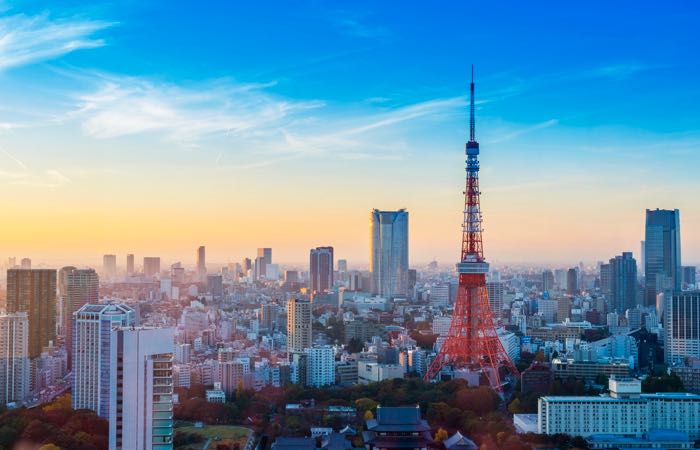
This much-loved national icon offers observatories, oddball attractions and souvenir stores filled with kitsch. Although Tokyo SkyTree has stolen the spotlight as Japan’s tallest structure, Tokyo Tower, built in 1958 and modeled after the Eiffel Tower, still attracts about two million visitors annually. Now looking downright diminutive compared to Tokyo’s growing number of highrises, the 1,092-foot tower nonetheless remains visible with its trademark red-and-white markings and colorful nighttime illuminations. Two observatories, one at 492 feet and the other at 820 feet, provide decent vistas of the surrounding megalopolis; since it’s open late, you have options of either day or evening views (come only on a clear day). There are plenty of restaurants, souvenir shops for that tacky Tokyo memento, and other diversions on its lower floors, including a small aquarium. There’s also a theme park called Tokyo One Piece Tower that includes ride simulators, a domed theater, a slingshot gallery and about a half-dozen other attractions.
Nearest stations: Onarimon and Kamiyacho. -
Toshogu Shrine
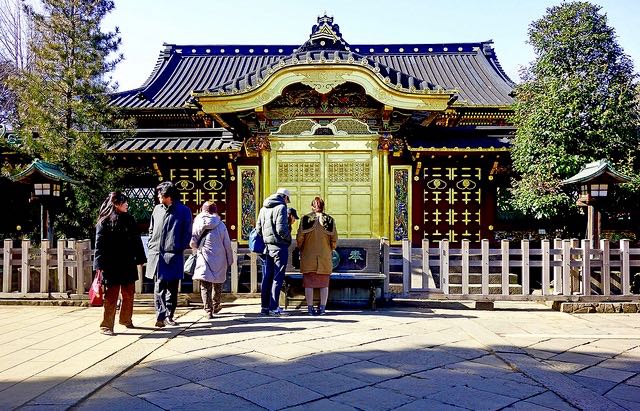
Ueno Park’s most famous religious structure is a miniature version of the Toshogu Shrine in Nikko. It’s dedicated to Tokugawa Ieyasu, the shogun who founded Edo (present-day Tokyo) in 1603 and was so shrewd a statesman that his progeny continued to rule for more than 250 years. The shrine was erected by Ieyasu’s grandson, who also directed construction of the much grander and more elaborate Toshogu Shrine in Nikko. Although miniature in comparison, the Ueno shrine nevertheless shows the same artistry, so heavily gilded it’s nicknamed the shrine of gold, and with intricate carvings of flowers, birds, fish and fantastical creatures painted a riot of colors. Remarkably, since its 1651 construction, the shrine has repeatedly survived destruction that laid much of Ueno and Tokyo to waste, including fierce fighting that took place here between imperial and shogun loyalist forces in 1868, the 1923 Great Kanto Earthquake, and World War II. On shrine grounds is a reminder of Japan’s last war, a flame lit from those in Hiroshima and Nagasaki as an appeal to world peace.
Nearest station: Ueno.
photo credit -
Tsukiji Market
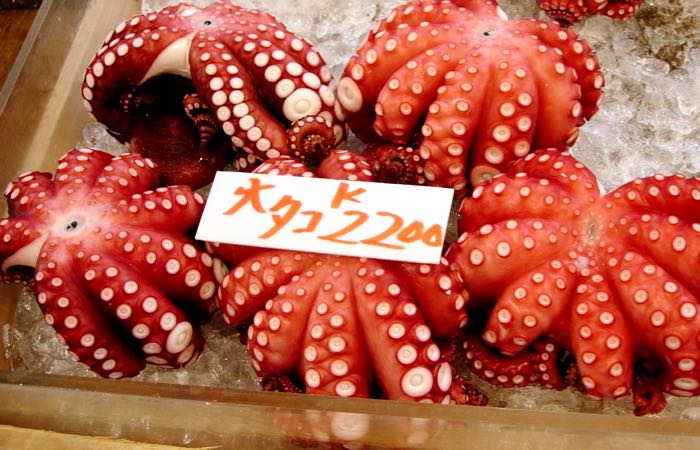
This is one of the world’s largest wholesale markets for seafood and produce. Open to the public daily from 9 to 11am, it’s a fascinating look at all the Japanese eat, from sea urchins to wasabi, plus many more things that are unidentifiable to the uninitiated. In a huge, cavernous warehouse filled with individual stalls, you’ll see octopus getting heads chopped off, huge tuna being sawed down to retail size, restaurateurs selecting food for the day’s menu, and retailers carting off their purchases for their own stores (no flash photography is allowed). Tuna auctions, held at 5:30am, can also be seen on a first-come, first-serve basis for the first 120 visitors willing to get there early (queues start as early as 2am), but even if you’re not an early riser there’s plenty to see at the Outer Market, an area of retail stalls and shops outside Tsukiji Market, plus lots of sushi restaurants offering some of the freshest sashimi around. Note, however, that Tsukiji Market is scheduled to move in 2017 to Toyosu in Koto-ku in order to make room for the 2020 Tokyo Olympics.
Nearest station: Tsukiji and Tsukijishijo. -
Ueno Zoo

Japan’s oldest zoo is home to more than 3,000 animals on its 35 acres, the most famous of which are pandas Ri Ri and Shin Shin. Its location in Ueno Park with its many museums, playgrounds, historic sights and other kid-friendly attractions, make it a big hit with families, who also appreciate its compact size and inexpensive admission. Established in 1882, it’s divided into two sections, connected by a winding walkway and monorail. Zoo denizens include bears (Japanese black bears, Hokkaido brown bears, and polar bears), tigers, lions, gorillas, monkeys (including Japanese macaques), rhinos, hippos, giraffes, zebras, crocodiles and many other animals, including domesticated animals in its petting zoo. Unfortunately, some of the enclosures are small and outdated by today’s standards, but the zoo wins accolades for its participation in international breeding programs; among other projects, has successfully bred aye-ayes and pygmy hippos. On zoo grounds are also two 17th-century structures, a five-story pagoda and a teahouse, relics of the massive Kan’ei-ji Temple that once occupied this area and was mostly destroyed when shogun sympathizers fought imperial forces at the end of the Edo Period.
Nearest station: Ueno.
photo credit -
Walking Tours Led by Volunteer Guides
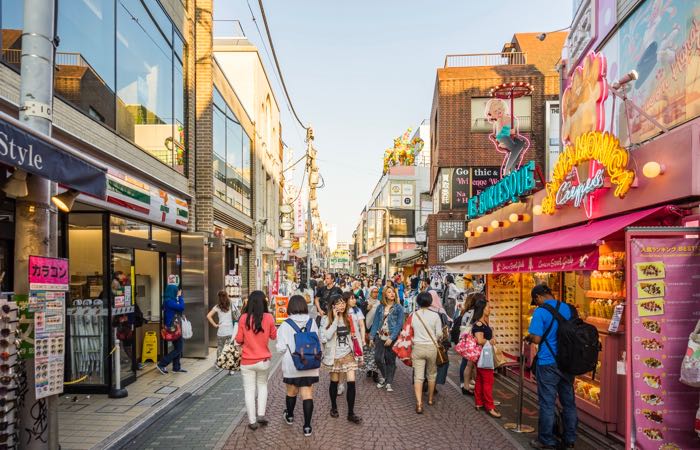
Rather than pay the high fees of an organized bus tour, why not see Tokyo’s most visited destinations for free (or almost free) on a walking tour led by a volunteer guide? The Tokyo Metropolitan Government offers 10 different tours, departing at 1pm Monday to Friday (some also at 10am) from Shinjuku’s Tokyo Tourist Information Center in TMG building no. 1 (the same building as the TMG Observatory). Tours are free, though participants are required to pay their own transportation and admission costs, where applicable, as well as those of the guides. Groups are limited to no more than 5 people, and tours offered include Shinjuku Gyoen Park (complete with a tea ceremony), the streets of Shinjuku with a visit to a department store), the National Diet, Asakusa, the East Garden, and Harajuku. Online applications must be made at least three days in advance (tours of TMG buildings or offered weekdays any time between 10am and 2:30pm). In addition to these tours offered by the city, there are also free tours of Asakusa, Ueno Park and the East Garden conducted by Goodwill Guides, a group of volunteer guides that range from retirees to students and housewives. No reservations for these are required; participants are asked to simply show up 10 minutes before departure times.
Nearest station for TMG tours: Tochomae. -
Yasukuni Shrine
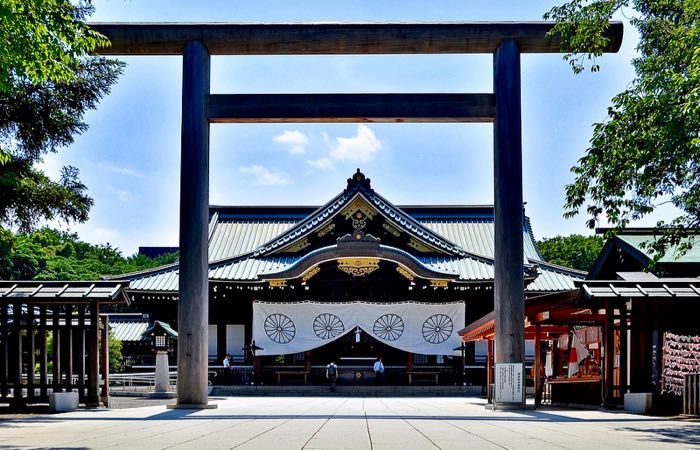
This is Japan’s most controversial shrine, dedicated to the country’s war dead but viewed by neighboring countries as a symbol of Japan’s nationalistic and militaristic past. It was founded in 1869 by Emperor Meiji to appease the souls of both samurai and imperial forces who died during the country’s civil war that brought an end to the feudalistic Edo Era. Today, more than 2.4 million Japanese war dead are enshrined here as divinities, including those from the Sino-Japanese and Russo-Japanese wars, the Manchurian Incident and both world wars. Its grounds are planted with more than 600 cherry trees, outdoor display cases exhibit Japanese flower arrangements or bonsai year-round, and a flea market is held at the shrine’s entrance every Sunday. But it’s the Yushukan that many visitors come to see. A war memorial museum outlining Japan’s war history, it displays samurai armor and swords, military uniforms, tanks, guns, a submarine human torpedo, and a fighter plane used in suicide missions. Unfortunately, English explanations are disappointingly vague and Japan’s role as aggressor is hardly touched. The most thought-provoking displays are the endless photographs of war dead, including very young teenaged soldiers and female students and nurses who died in battle.
Nearest station: Kudanshita.
photo credit -
Yoyogi Park
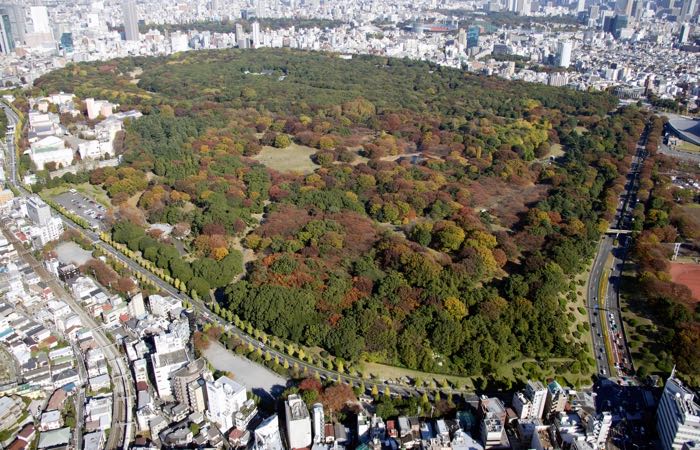
Conveniently located just steps from Harajuku or Shibuya, this 133-acre public park offers something for everyone, whether it’s sports, cycling or simply hanging out. It began life as a drilling ground for the Japanese army, followed by living quarters for U.S. occupation forces after World War II and then as the Olympic village for athletes attending the 1964 Tokyo Olympics. Today it’s one of the city’s most beloved parks, attracting families, couples and many international groups for weekend picnics on the wide, grassy lawns. It also has a forested area that joins that of Meiji Shrine, a bird sanctuary, a dog run, a bike rental facility and a dedicated cycling course (including a cycling plaza just for kids). Its close proximity to Harajuku ensures a steady stream of street performers, especially on weekends, as well as teenagers dressed in costume, making it a great spot for people watching. Many events take place in the park, including the occasional antique market, flea markets and the annual Tokyo Rainbow Pride weekend in May that celebrates Tokyo’s LGBT community.
Nearest stations: Harajuku, Meiji-Jingumae and Yoyogi-Koen.
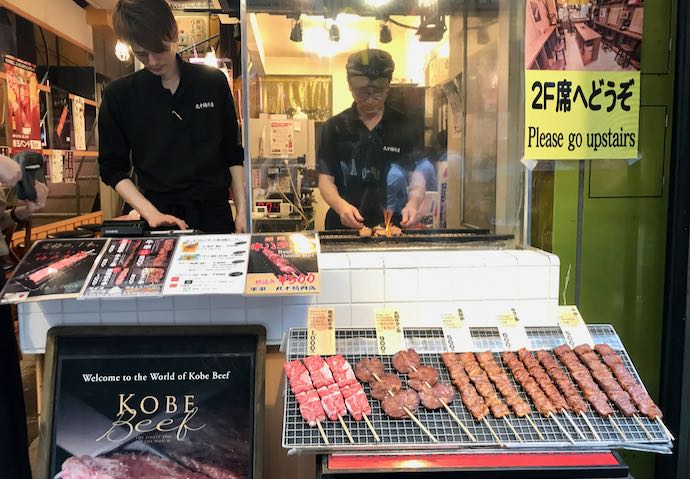
About Santorini Dave